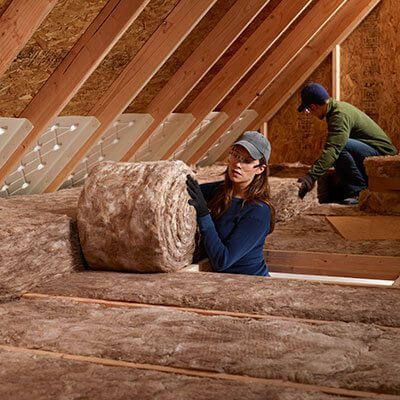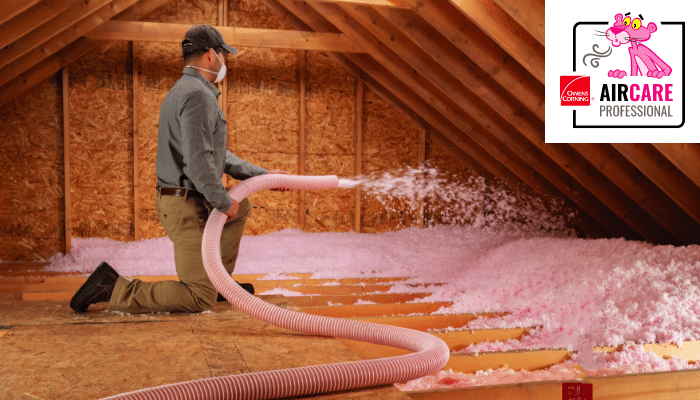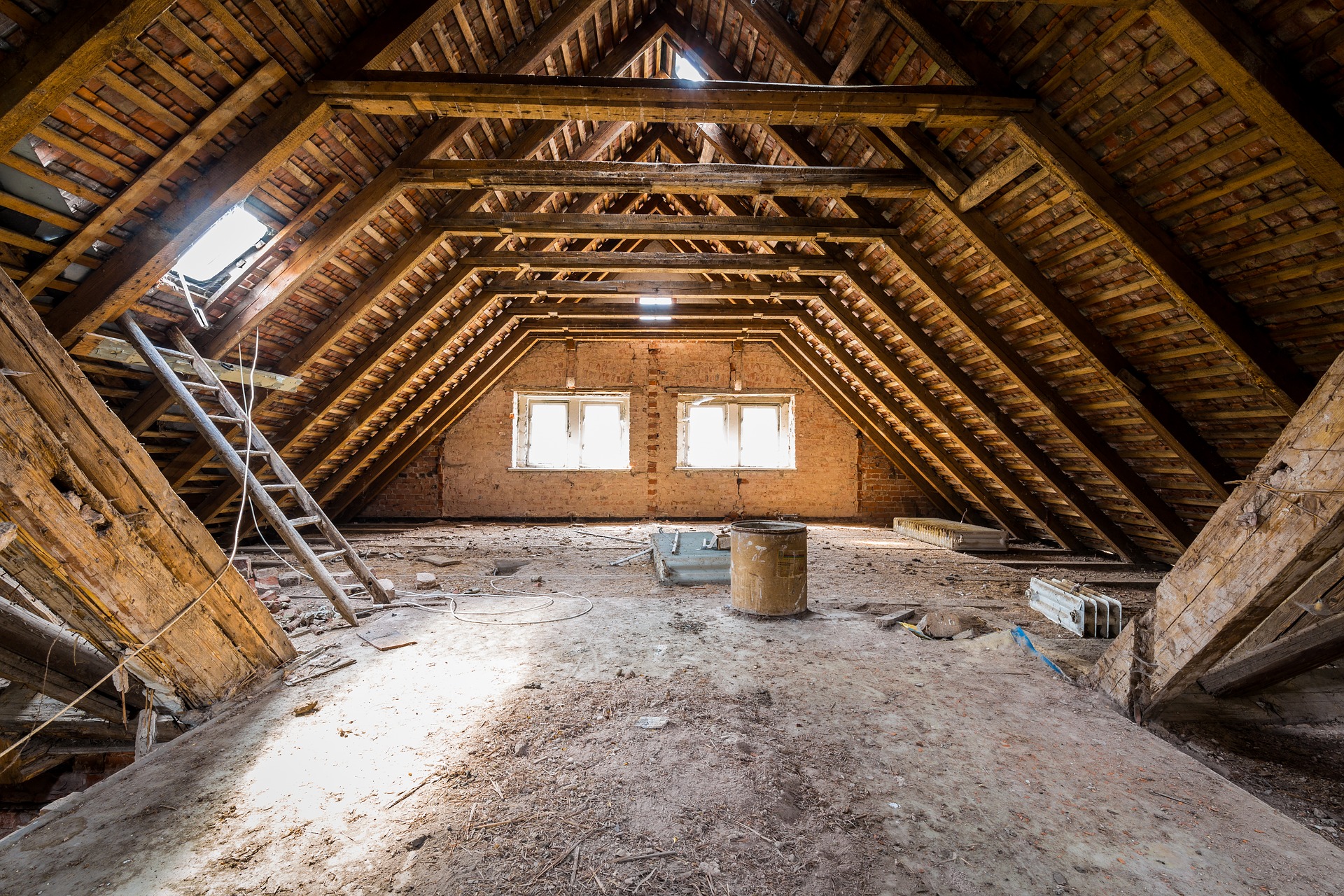Discover the Various Sorts Of Attic Insulation and Their One-of-a-kind Advantages for Your Home's Power Performance

Fiberglass Insulation
Fiberglass insulation is among the most commonly used materials for attic insulation as a result of its superb thermal performance and cost-effectiveness. Made up of little glass fibers, this material properly catches air, producing a shielding barrier that aids preserve constant indoor temperature levels. Its high R-value per inch makes it particularly efficient at standing up to warmth transfer, which is vital for energy conservation in homes.
Setup of fiberglass insulation is relatively straightforward, typically available in batts or loose-fill kinds, fitting numerous attic setups. In addition, it is non-combustible and immune to wetness, lowering the risk of mold and mildew development. This resilience adds to its durability, making fiberglass a practical lasting investment for home owners.
Furthermore, fiberglass insulation is often made from recycled materials, which enhances its eco-friendliness. The material can additionally add to soundproofing, minimizing sound transfer in between spaces. While it is vital to put on safety equipment during installment to prevent inflammation from the fibers, the overall advantages of fiberglass insulation, consisting of power financial savings and environmental considerations, make it a prominent choice for boosting attic efficiency and promoting a comfortable living environment.
Spray Foam Insulation
Spray foam insulation is an extremely effective alternative for attic insulation, recognized for its superior air sealing and thermal efficiency. This cutting-edge insulation material is made up of a blend of isocyanate and polyol resin, which, when integrated, increases quickly to fill spaces and tooth cavities in the attic room room. Its capacity to follow different surface areas makes certain a continual obstacle against air leakages, dramatically decreasing warmth loss throughout colder months and heat gain during warmer periods.
One of the key benefits of spray foam insulation is its high R-value per inch, which implies it provides outstanding thermal resistance in a fairly thin application. This is especially beneficial in attic rooms where space is typically restricted. Additionally, spray foam can help lessen dampness buildup, reducing the risk of mold and mildew development, which can be destructive to both the framework and interior air high quality.
While the first expense of spray foam insulation might be more than typical choices, its long-term energy savings, combined with increased comfort and enhanced home worth, make it a beneficial investment for homeowners seeking boosted power efficiency. Attic Insulation DFW. Generally, spray foam insulation stands out as a reliable solution for enhancing attic room insulation
Cellulose Insulation

Cellulose insulation is a popular choice for attic insulation, largely composed of recycled paper products treated with fire retardants. This eco-friendly choice is understood for its outstanding thermal efficiency, effectively lowering heat transfer in both summer season and cold weather. The dense make-up of cellulose permits it to fill up spaces and voids in attic room spaces, giving a smooth obstacle against air leakages.
One of the significant benefits of cellulose insulation is its ability to withstand mold and bugs, owing to the fire resistant treatments utilized during production. In addition, it flaunts a high R-value per inch, which converts right into exceptional energy performance. Home owners can anticipate lower heating & cooling expenses as an outcome of enhanced insulation.
Setup is generally completed through blowing loose cellulose right into the wanted area, enabling for a effective and quick process. This technique likewise lessens interruption to the existing framework. Additionally, cellulose insulation has a reasonably reduced environmental influence, as its manufacturing process utilizes recycled products, contributing to sustainable building methods.
Rock Woollen Insulation
Amongst the different alternatives for attic insulation, rock woollen, additionally called mineral wool, stands apart because of its outstanding thermal and acoustic efficiency. Made from recycled or all-natural products, rock woollen is created by thawing rock and rotating it into fibers, leading to an item that supplies excellent insulation homes.
One of the substantial benefits of rock woollen insulation is its high R-value, which indicates its performance in resisting warm circulation. This particular not only improves energy performance however additionally adds to maintaining a comfy indoor temperature year-round. Additionally, rock wool is inherently fireproof, making it a more secure alternative for homes as it can withstand high temperatures without melting or releasing harmful fumes.
Additionally, rock wool insulation excels in soundproofing capabilities, efficiently reducing sound transmission in between rooms and from outside sources. In general, rock woollen insulation supplies a detailed solution for improving energy try this web-site efficiency, safety and security, and comfort in property settings.
Radiant Barrier Insulation
Glowing obstacle insulation functions as an efficient service for lessening warmth transfer in attic rooms, especially in warmer environments. This kind of insulation works by reflecting radiant warm far from living spaces, consequently minimizing the quantity of warmth that gets in a home during warm weather condition - Attic Insulation DFW. Typically made up of an extremely reflective product, such as light weight aluminum foil, glowing obstacles are set up in attics, dealing with the roof covering, where they visit our website can intercept incoming warm from the sunlight
The main advantage of glowing obstacle insulation is its capability to lower cooling prices. By showing heat instead of absorbing it, radiant barriers can help preserve a much more secure indoor temperature level, lowering the workload on cooling systems. This efficiency equates right into reduced energy costs and increased comfort for house owners.
Along with energy savings, glowing barriers can additionally add to enhanced indoor air high quality. By reducing warmth accumulation, they assist reduce humidity degrees, which can stop mold and mildew growth and enhance total air blood circulation. When mounted properly, radiant barrier insulation can be a vital enhancement to any energy-efficient home, making it a worthwhile consideration for house owners wanting to improve their attic room insulation method.
Conclusion
In conclusion, recognizing the various kinds of attic room insulation-- fiberglass, spray foam, cellulose, rock wool, and radiant obstacles-- enables property owners to make educated decisions relating to power performance. By choosing the proper insulation product, considerable decreases in power prices can be accomplished, along with enhancements in indoor convenience.

In verdict, recognizing the different types of attic room insulation-- fiberglass, spray foam, cellulose, rock wool, and radiant barriers-- makes it possible for homeowners to make enlightened choices pertaining to power efficiency.
 Jenna Von Oy Then & Now!
Jenna Von Oy Then & Now! Michael Jordan Then & Now!
Michael Jordan Then & Now! Elisabeth Shue Then & Now!
Elisabeth Shue Then & Now! Monica Lewinsky Then & Now!
Monica Lewinsky Then & Now! Tonya Harding Then & Now!
Tonya Harding Then & Now!